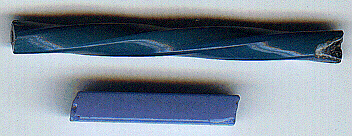|
Your path =Home>Beadmaking and Materials>Beadmaking, Glass > wound
Manufacture: Glass, Drawn
Background
Drawn glass beads are made from cutting beads from a tube of glass that has been drawn or pulled out from a hollow gather. It is an early industrial mass-production of beads.
|
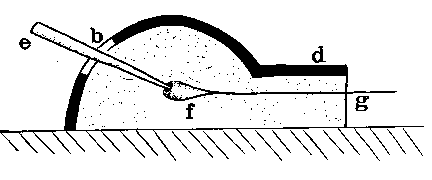
|
The earliest drawn beads were made in Southeast India several centuries BC. A hollow cone of glass (f) sits on a hollow tube (e) in the furnace and a worker pulls the tube out continuously (g).
|
|
Europeans drew glass tubes by hand. This would be a short tube; galleries 100 meters (yards) long were built in Venice to make long thin tubes for seed beads.
|
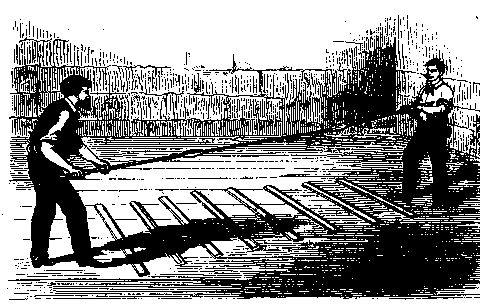
|
|
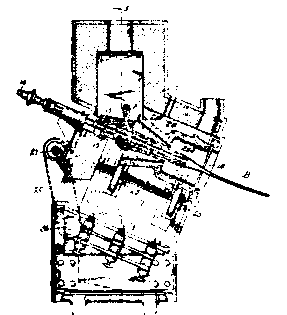
|
In 1917 Edward Danner of the Libby Glass Co. of Toledo, Ohio invented an automatic drawing machine. It was installed in Venice and Bohemia shortly thereafter. It is still the workhorse of the seed bead industry.
The glass is heated in the compartment at the top and runs down onto a turning ceramic mandrel (A) into which compressed air is blown to keep the tube open.
|
|
Another machine invented by Danner pulled the extruding tube out via a linked chain. The tube would cool until at the end it could be cut into convenient sized pieces.
|
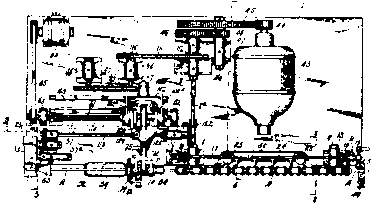
|
|
The tubes could be square in section or even twisted. The twisted tube is an old Nueva Cadiz bead.
|
|
|

|
More than one layer of glass can be used in a tube. With a white opaque center, a translucent coating will sparkle. These are called "white hearts."
|
|
The most complex drawn beads have multiple layers that are successively molded. When ground on the ends, chevron patterns appear at the side. Chevrons (rosetta in Italian) are among the most popular of beads.
|
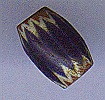
|
|
_________________________________________________
Small Bead Businesses | Beading & Beadwork | Ancient Beads | Trade Beads
Beadmaking & Materials | Bead Uses | Researching Beads | Beads and People
Center for Bead Research | Book Store | Free Store | Bead Bazaar
Shopping Mall | The Bead Auction | Galleries | People | Events
The Bead Site Home | Chat Line | Contact Us | Site Search Engine | FAQ
|




